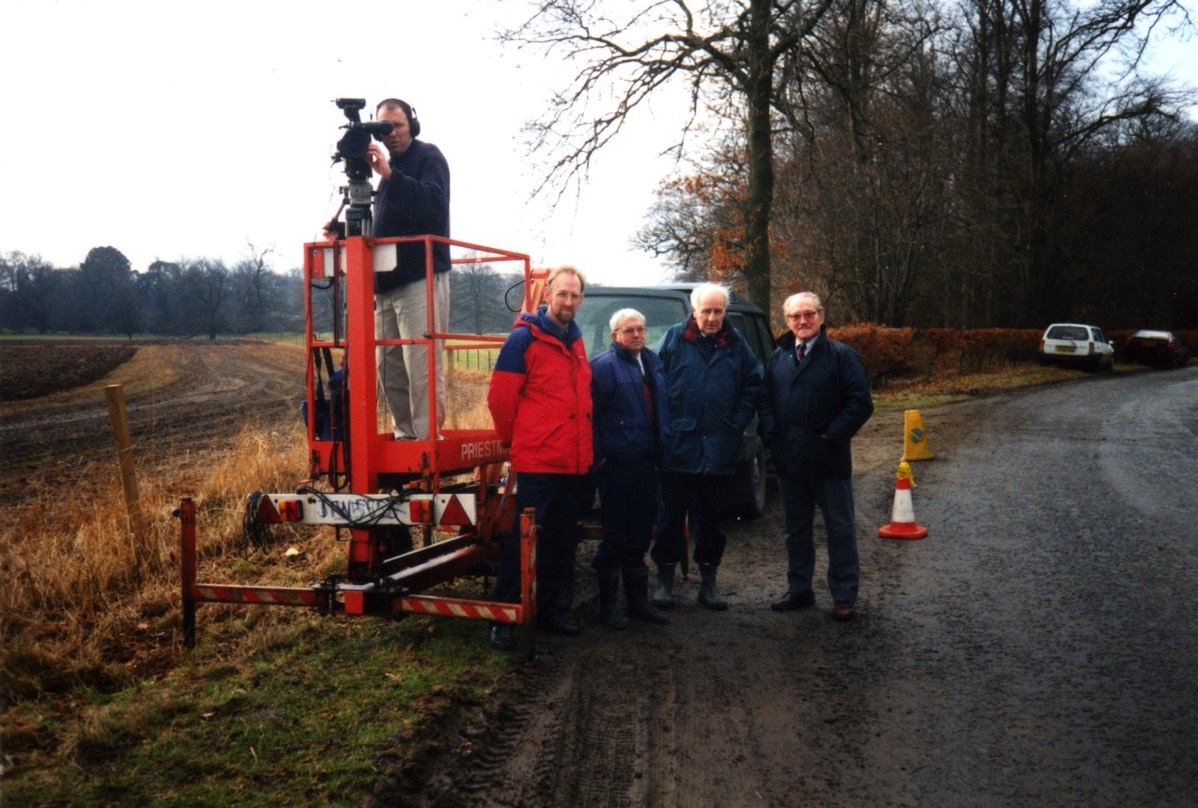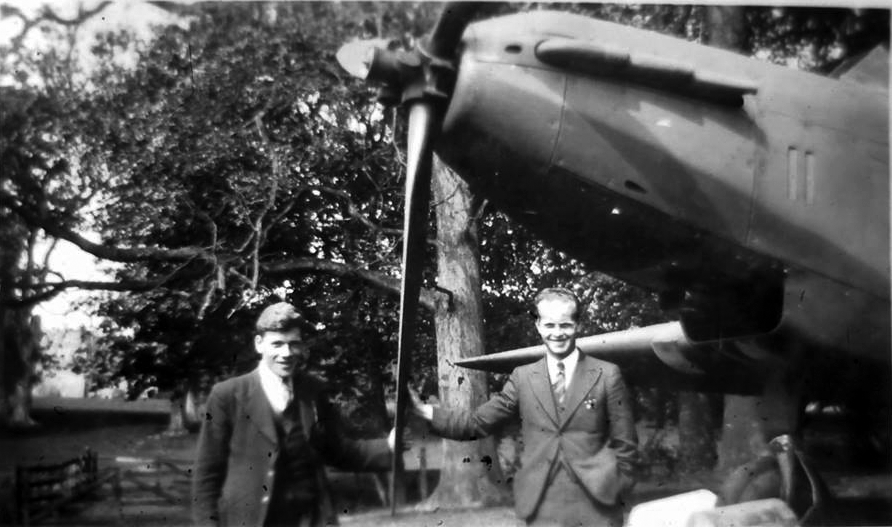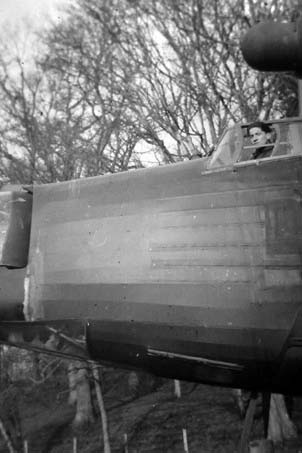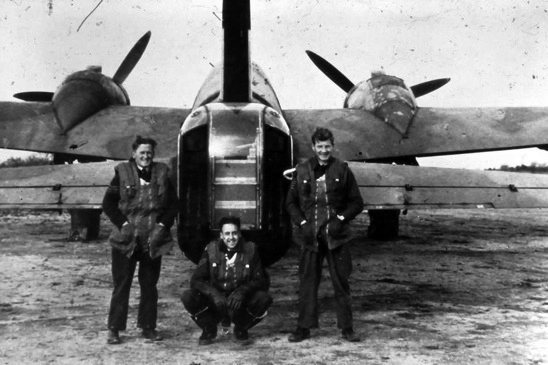No. 27 Satellite Landing Ground, Lennoxlove

No. 27 Satellite Landing Ground, Lennoxlove, south of Haddington Looking west.
Lennoxlove SLG was situated on three fields which lie to the north of the B6368 and B6369 as the two roads run between the Lennoxlove and Colstoun estates. The Cockmilane Road was lowered and blocked for the duration as the landing strip extended to the east beyond it. Stretches of Lennoxlove’s estate walls were demolished to allow tractors to pull aircraft to their storage positions beneath the trees and these gaps can still be seen. The landing ground was not particularly suitable for the landing of heavy four-engined aircraft, though this was attempted successfully, and most of the aircraft stored there were two-engined or single-engined. The main problem was that the ground tended to get too wet and soft in the wetter seasons and the heavier aircraft simply bogged down.
The Air Transport Auxiliary
Among others, Air Transport Auxiliary pilots flew surplus aircraft from Maintenance Units or from active squadron bases to Lennoxlove. ATA pilots were often tasked with flying aircraft types they had never flown before, as long as it was an example of one of the six classes of aircraft they were trained and sufficiently experienced to fly. All they had to assist them was a small booklet listing the dos and don’ts of flying every aircraft in the RAF’s inventory. It’s no wonder some 173 ATA pilots were lost during the war, including Amy Johnson, lost over the Thames estuary.
*Private e-mail correspondence: 2013 DH.

A post-war photograph of the RAF and local civilian staff at 27 SLG, Lennoxlove. The aircraft behind is a Westland Welkin.
Lennoxlove’s Workforce
As the photograph above shows, at the end of the war the staff at the SLG numbered some five RAF personnel and forty-one civilian workers, including two women. Many of the civilians appear to be well over or under military service age. Once the aircraft had been flown in their work entailed moving the aircraft to hidden positions, safeguarding the planes from tree damage and the general maintenance of the aircraft to keep them airworthy to whatever degree required. Some of the above workers would have been qualified engineers as, for example, the complicated task of removing aero engines was undertaken on site on many occasions. In many ways, David McManus was typical of a number of those who worked as an unqualified labourers at Lennoxlove before joining up. In his case he joined RAF Bomber Command, trained as a navigator and, as one of his operations, was to participate in a raid on Penemunde, the Baltic rocket testing facility.

Gavin Tully Jackson (cameraman), David Haire, Billy Logan, Jack Tully Jackson and David McManus on the Lennoxlove/Coulston Road.

Two workers by a Fairey Battle. Recognise them? Please e-mail me if you do.

David McManus in the cockpit of a Wellington 1c,
1941.

An RAF delivery crew standing at the rear of a Vickers Wellington.
The plane has had its tail guns removed prior to storage.
Perhaps this was taken at the end of the war as one can’t imagine every delivery crew
having their photo taken or perhaps it was the first Wellington delivered.
Aircraft Lost
We know of one aircraft, Blenheim Mk IV, Z7646, which was lost on the 30th July, 1941, after taking off from Lennoxlove SLG on a flight to Dumfries. It came down on Bowbeat Hill near Peebles and the pilot, P/O Elijah Henson, was killed. [Thanks to peakdistrictaircrashes.co.uk]

